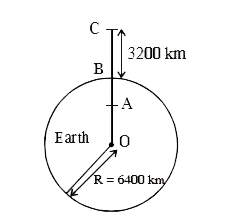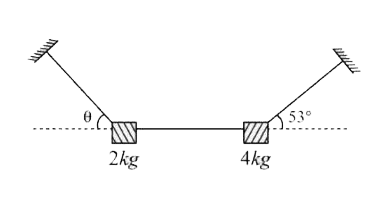The value of ΔH and ΔU will be same for
CaCO3(s)→CaO(s)→CO2(g)
SO2(g)+12O2(g)→SO3(g)
N2(g)+3H2(g)→2NH3(g)
H2(g)+l2(g)→2HI(g)
To determine when the values of ΔH (enthalpy change) and ΔU (internal energy change) are the same for a reaction, we can use the relationship:
ΔH=ΔU+ΔngRT
Where:
- Δng is the change in the number of moles of gas (moles of gaseous products - moles of gaseous reactants).
- R is the universal gas constant.
- T is the temperature in Kelvin.
For ΔH and ΔU to be equal, the term ΔngRT must be zero. This occurs when:
Δng=0
This means that the number of moles of gaseous products must equal the number of moles of gaseous reactants.
1. Identify the Reactions: We need to analyze the four given reactions to find out which one has Δng=0.
2. Calculate Δng for Each Reaction:
- For each reaction, count the moles of gaseous products and subtract the moles of gaseous reactants.
- If the result is zero, then that reaction is the one where ΔH = ΔU.
3. Evaluate Each Option:
- Option 1: If there is 1 mole of gas in products and 0 moles in reactants, then Δng=1−0=1 (not zero).
- Option 2: If there is 1 mole of gas in products and 3/2 moles in reactants, then Δng=1−(−3/2)=1+3/2=5/2 (not zero).
- Option 3: If there are 2 moles of gas in products and 4 moles in reactants, then Δng=2−4=−2 (not zero).
- Option 4: If there are 2 moles of gas in products and 2 moles in reactants, then Δng=2−2=0 (this is zero).
4. Conclusion: The reaction where ΔH and ΔU are equal is the fourth option, as it satisfies the condition Δng=0.
Final Answer:
The value of ΔH and ΔU will be the same for the fourth reaction.
- Δng is the change in the number of moles of gas (moles of gaseous products - moles of gaseous reactants).
- R is the universal gas constant.
- T is the temperature in Kelvin.
- For each reaction, count the moles of gaseous products and subtract the moles of gaseous reactants.
- If the result is zero, then that reaction is the one where ΔH = ΔU.
- Option 1: If there is 1 mole of gas in products and 0 moles in reactants, then Δng=1−0=1 (not zero).
- Option 2: If there is 1 mole of gas in products and 3/2 moles in reactants, then Δng=1−(−3/2)=1+3/2=5/2 (not zero).
- Option 3: If there are 2 moles of gas in products and 4 moles in reactants, then Δng=2−4=−2 (not zero).
- Option 4: If there are 2 moles of gas in products and 2 moles in reactants, then Δng=2−2=0 (this is zero).
The value of ΔH and ΔU will be the same for the fourth reaction.
Topper's Solved these Questions
Similar Questions
In the reported figure of earth, the value of acceleration due to gravity is same at point A and C but it is smaller than that of its value at point B (surface of the earth). The value of OA : AB will be x : y. The value of x is ..........

View SolutionTwo van der Waals gases have the same value of b but different values of a. Which of these will occupy greater volume under identical conditions. If the gases have the same value of a but different values of b, which of them will be more compressible?
View Solution
Knowledge Check
The place value of 7 in 527094 is the same as ______ .
A7000+1094B7094−90C6094+906D8094−94In which of the following given examples, the value of Vmax changes while the K, value remains same?
AInhibition of succinate dehydrogenase by malonateBInhibition of alcohol dehydrogenase to treat methanol poisoningCInhibition of cytochrome oxidase by cyanideDInhibition of folic acid synthesis in bacteria by sulpha drugsA : The gravitational force does not depend on the intervening medium .
R : The value of G has same value anywhere in the spaceAIf both Assertion & Reason are true . And the reason is the correct explanation of the assertion , then mark (1)BIf both Assertion & Reason are true but the reason is not the correct explanation of the assertion , then mark (2)CIf Assertion is true statement but Reason is false , then mark (3)DIt will move the same speed , tangentially to the spacecraft
Is the value of g same every where on the surface of Earth ? How has it been decided?
View SolutionThe given system is in equilibrium. The blocks are at same horizontal level. The value of angle is : θ is :

View SolutionFor which of the following electrolyte the value of ._(m) and ⋀eq are same?
View SolutionThe value of which one of the following quantity remains same in all system of units ?
View SolutionThe value of which one of the following quantities remains same in all systems of units?
View Solution
